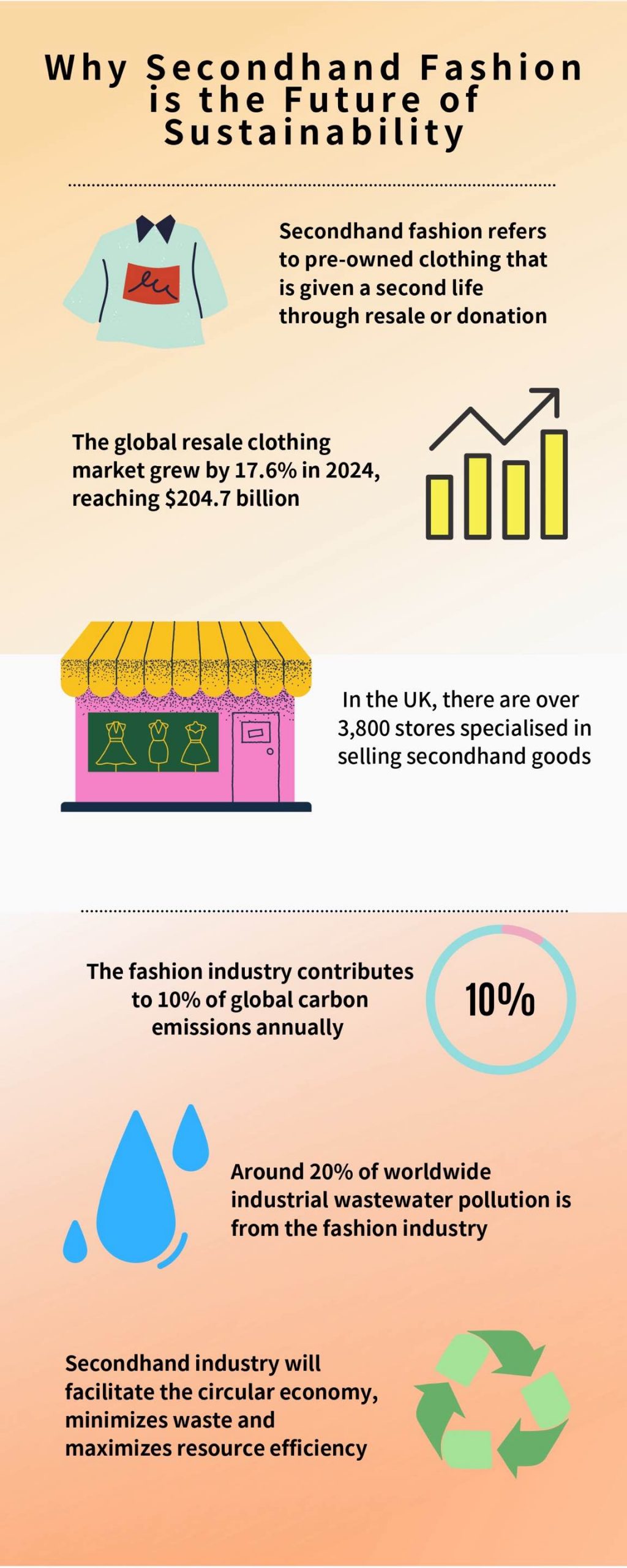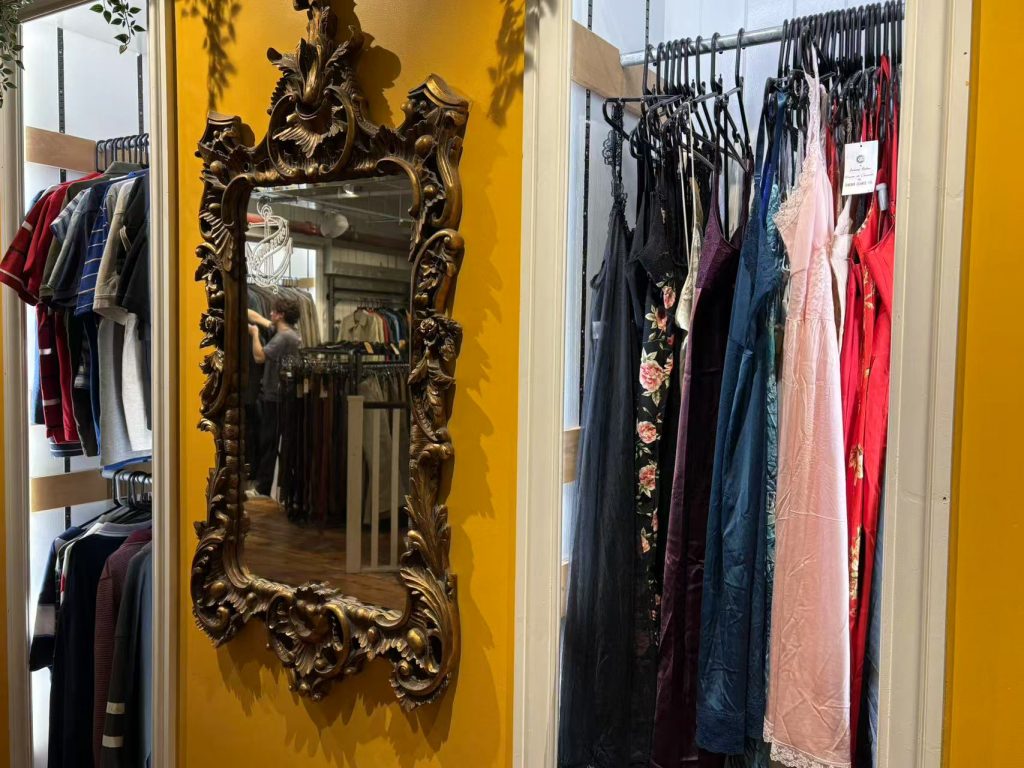The second-hand clothing market in Cardiff has grown significantly, particularly Gen Z, embracing secondhand clothing as a sustainable fashion
Like many students, Ellie Cooper enjoys shopping at charity stores with friends to find some affordable and high-quality goods after class. But behind the shopping reasons, environmental protection and sustainable fashion are her true motivation.
Ellie has studied international relations at Cardiff University, she realized the connection between fashion and feminism. After she studied sustainability at Queen’s University Belfast, she has a deeper understanding of fast fashion industry and environment.
“Lots of clothes are ending up in a landfill, they emit both carbon dioxide and methane. When it rains, it leaks the chemicals form the clothes into the water as that’s the water touch,” Ellie has 1.1k followers on Instagram, and often shares some of her environmental concepts and sustainable outfits.

Clothing waste has been steadily increasing over the last decade both within the UK and globally. The fashion industry produces 100 billion garments, staggering 92 million tons of these end up in landfills each year.
The fast fashion industry is one of the main sources of clothing waste. It refers to a business model that emphasizes the rapid and large-scale production of clothing to keep pace with current fashionable trend.
On average, British consumers purchase new clothing worth nearly £980.50 annually. 7kg of fashion waste per person goes to landfill at the same time.
The intersection between of professional knowledge and experience has given Ellie more thoughts on the relationship between fashion and environmental protection.
“Secondhand is kind of sustainable fashion, just having fun and going shopping in a charity shop is making a difference to people’s lives,” she says, “If you buy secondhand, you’re actually reducing the impact of your item by 20-30%.”
In the UK, there are over 3,800 stores specialized in selling secondhand goods. During 2021, sales in these stores saw a remarkable growth of 27.2 percent in value, a clear indication of increased consumer interest in the secondhand market.

The second-hand clothing market has grown significantly in recent years, more young people, especially Gen Z, choosing to buy vintage as a sustainable fashion. The “vintage” tag has 28.7 billion views on TikTok, the favorite app of Generation Z.
“More young people choose to buy vintage clothes. Not only the better quality, but they also think buying vintage is a good way to express themselves,” says Hannah Read, the manager of Beyond Retro, the vintage shop in the Cardiff City Centre.
“Many young people are looking for a way to stand out and express their personality,” said Alex Goat, the chief executive of youth culture consultancy Livity. “Wearing secondhand is a demonstrable statement of your intention, and a rejection of one of the most polluting industries on the planet.”
Fast fashion advertising and celebrity effects make more people pay attention to appearance, and consumers to pursue the updated fashion trends unconsciously. Ellie says that she usually bombarded by the adverts for the new clothes.

Adam Jay, CEO of Vinted Marketplace, stated that the cost of living crisis also has boosted the trading of secondhand. A survey revealed that 24% of global consumers buy secondhand goods, whilst 41% choose to repair broken products to save money.
Hannah Read adds that “Our store has also attracted a lot of elderly people, they think the price is low and quality is much better.”
Alice Price, a clothing analyst at Global Data, stated that in the face of economic uncertainty, consumers are turning to fashion with reasonable resale prices.
The secondhand market in the UK has been steadily growing, Global Data stating that it grew by 149% between 2016 and 2022, and is expected to grow by 67.5% between 2022 and 2026.
“Be brave and wear something that is not on trends, you won’t like every other person,” says Ellie, “Do you research on the brand before buying clothes, you may make a better decision based on the environment.”
How can I contribute to a more sustainable planet?
Embrace Sustainable Habits: Wearing the clothes we already have, extend the wearing time of clothing.
Adopting Green Fashion: Making sustainable choices before buying clothes. choosing eco-friendly materials, organic cotton is much better.
Promoting Conscious Fashion: Using social media to make positive impacts on influencing consumer behavior towards a more sustainable future.
Encouraging Innovation: Support eco-friendly fashion companies who investing in new materials and production methods.
